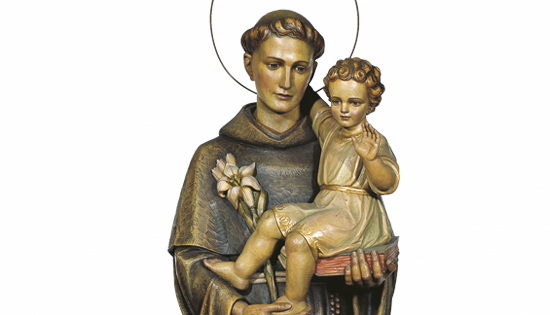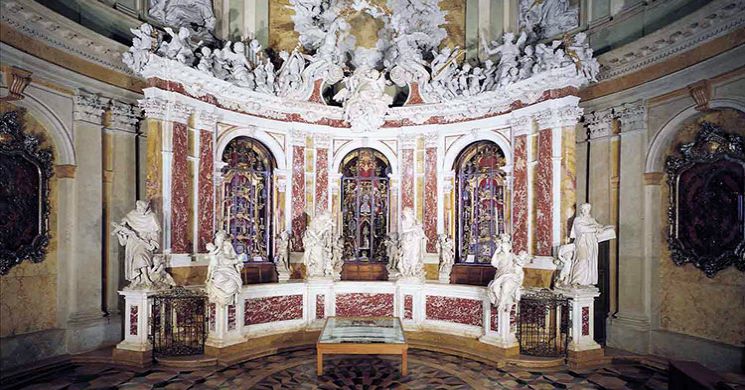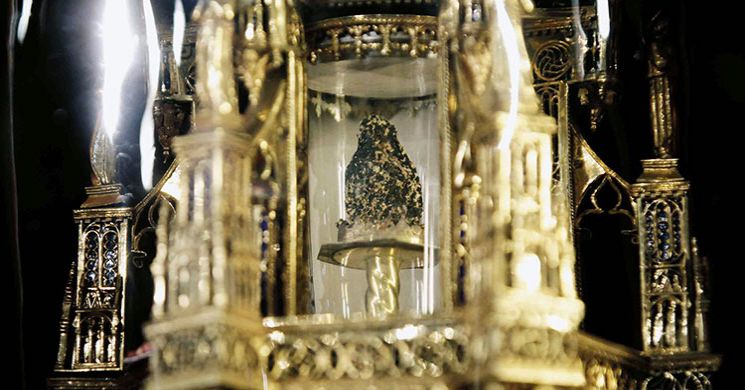The chapel was erected towards the end of the 17th century in sumptuous Baroque style according to the plan of sculptor-architect Filippo Parodi, who also produced the statues in the balustrade (from left: St. Francis of Assisi; Faith; Humility; Penitence; Charity; St. Bonaventure) and above the central niche (Saint Anthony in glory).
In the three niches are kept reliquaries, chalices, ex voto objects, and other precious objects.
In the left niche there is a modern reliquary containing a relic of Saint Pope John Paul II. The precious central reliquary by R. Cremesini (1982) contains a bone from the foot, a fragment of skin, and some hair from the body of St. Anthony. In the central niche, in a splen did reliquaryby the goldsmith Giuliano da Firenze (1436), the Incorrupt Tongue of St. Anthony is kept. Above this is a reliquary in which the Saint’s Jawbone is kept. This reliquary, the work of a Paduan artist, dates from 1350.
Further above stands a small silver case by G. Fabbro (1437), in which a fragment of the True Cross is preserved. Immediately below the reliquary containing the Incorrupt Tongue is a modern reliquary by C. Balljana (1981), which houses the Saint’s vocal apparatus, removed during the last scientific examination. The chapel also houses St. Anthony’s hab it and the coffin in which his body was laid to rest.



